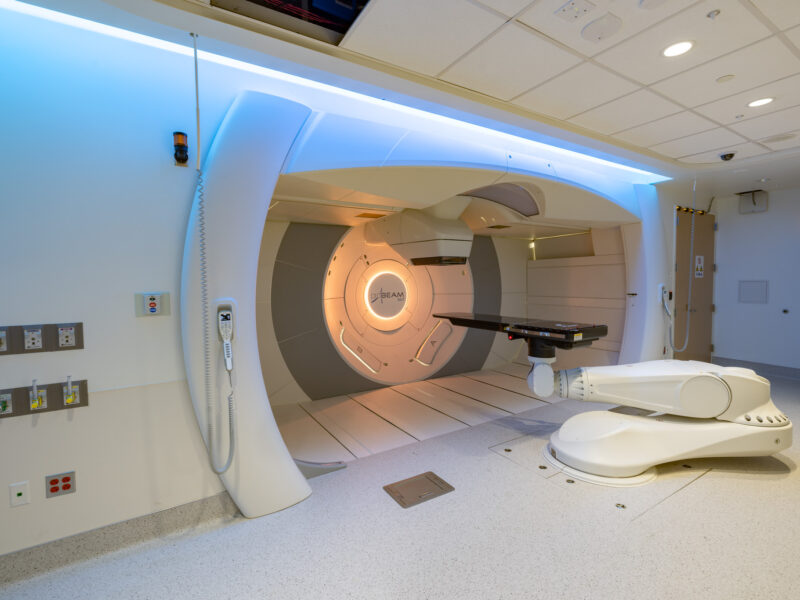Use of Cardiac MRI to Monitor Medical Treatment of Rhabdomyoma
Use of Cardiac MRI to Monitor Medical Treatment of Rhabdomyoma https://pediatricsnationwide.org/wp-content/themes/corpus/images/empty/thumbnail.jpg 150 150 Mary Bates, PhD Mary Bates, PhD https://secure.gravatar.com/avatar/c6233ca2b7754ab7c4c820e14eb518c8?s=96&d=mm&r=g- June 12, 2019
- Mary Bates, PhD
Case study shows success for medical therapy and MRI monitoring of a cardiac rhabdomyoma.
In a new case study, researchers from Nationwide Children’s Hospital report treating cardiac rhabdomyoma in a newborn with an mTOR inhibitor called everolimus. They monitored the tumor’s regression using cardiac MRI.
Cardiac rhabdomyoma is a common type of heart tumor in newborns. Although these tumors often naturally regress on their own, some interfere with how the heart is functioning and may require surgery or medical therapy.
In the new case study, described in the journal Pediatrics, the newborn patient’s cardiac rhabdomyoma was very large, resulting in problems in blood flow and disrupting the heart’s electrical system.
The medical team decided to try a medication called everolimus, which is an mTOR inhibitor shown to be effective in treating similar tumors.
“Our use of everolimus was based on concern that the mass was still causing significant cardiac issues resulting in the patient being actively hospitalized when we started the medication,” says Kyle Davis, MD, a Hematology, Oncology, & BMT Fellow at Nationwide Children’s and the study’s lead author.
Historically, the characterization and monitoring of such a tumor would have been limited to echocardiograms. However, there are limitations to this imaging modality, including difficulties in three-dimensional measurements. For this reason, the use of cardiac MRI is becoming more common. This case report is the first to describe using cardiac MRI to determine the impact of the tumor prior to surgery and then to follow the effect of everolimus treatment.
“Cardiac MRI offers superior imaging ability for cardiac tumors,” says Linda Cripe, MD, pediatric cardiologist for The Heart Center and one of the study’s authors. “It allows us to make more accurate measurements and to delineate margins and follow the tumor more carefully.”
The patient’s tumor shrank significantly with the treatment, and she continues to be monitored for new heart problems or tumor progression now that she is off everolimus.
While on everolimus, the patient experienced an increased incidence of a preexisting arrhythmia. This resolved with the planned cessation of therapy. Dr. Davis, Dr. Cripe, and colleagues say that everolimus should be considered for use in pediatric patients with inoperable cardiac rhabdomyoma, but that close monitoring is important in patients with arrhythmia.
This case study also demonstrates the value of cardiac MRI as a monitoring tool for complex cardiac tumors. Cardiac MRI can provide accurate three-dimensional information about tumor volume and relation to other cardiovascular structures while also providing information about ventricular function.
“I think this case report presents the possibility that this could be an effective drug and monitoring regime for children with these rare cardiac tumors who don’t have other options,” says Dr. Cripe, who is also professor of Pediatrics at The Ohio State College of Medicine. “It may help children avoid surgery in the future.”
Both Dr. Cripe and Dr. Davis emphasize that it took teamwork to address their patient’s issues in a new way.
“That’s the advantage of a large medical center like Nationwide Children’s – when you see a difficult problem, you can find a novel solution for it,” says Dr. Cripe.
“This study is the result of the collaborative atmosphere at Nationwide Children’s,” says Dr. Davis. “This patient’s care required a collaboration between several departments, including pediatric hematology and oncology, pediatric cardiology, pharmacy and pathology. With all those groups working together, we were able to find the best treatment plan from diagnosis to treatment.”
Reference:
Davis K, Jassal A, Clark A, Hor K, Baker P, Cripe L, Cripe T. Use of Cardiac MRI to Assess Antitumor Efficacy of Everolimus in Sporadic Cardiac Rhabdomyoma. Pediatrics. 2019; 143(6):e20182495.
About the author
Mary a freelance science writer and blogger based in Boston. Her favorite topics include biology, psychology, neuroscience, ecology, and animal behavior. She has a BA in Biology-Psychology with a minor in English from Skidmore College in Saratoga Springs, NY, and a PhD from Brown University, where she researched bat echolocation and bullfrog chorusing.
-
Mary Bates, PhDhttps://pediatricsnationwide.org/author/mary-bates-phd/December 27, 2016
-
Mary Bates, PhDhttps://pediatricsnationwide.org/author/mary-bates-phd/
-
Mary Bates, PhDhttps://pediatricsnationwide.org/author/mary-bates-phd/
-
Mary Bates, PhDhttps://pediatricsnationwide.org/author/mary-bates-phd/
- Posted In:
- In Brief






